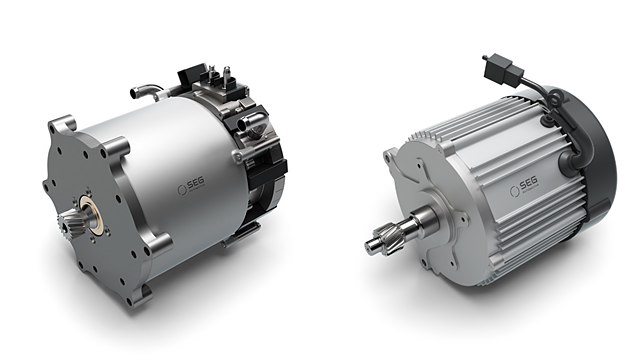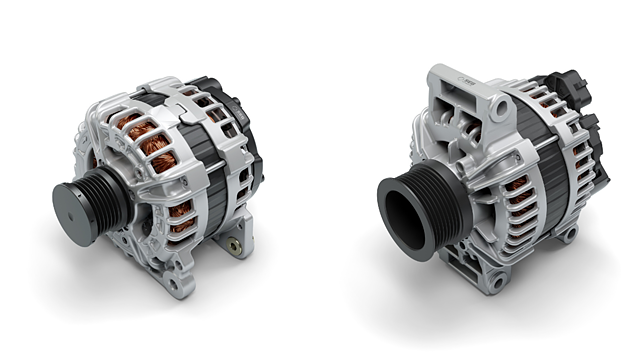
Anil Kumar MR is currently the Managing Director and Regional President for Indian operations of SEG Automotive. Earlier, he has held several senior leadership positions in the Bosch group, both in Technical and Sales/Marketing functions.
With electrification gaining momentum, what are the opportunities you see for SEG Automotive?
SEG Automotive is actively shaping the automobile industry's journey from the Internal Combustion Engines (ICE) to Electric Vehicles (EVs) by delivering efficient solutions for CO2 reduction – regardless of the powertrain technology. We continuously evaluate the product gaps and manage our portfolio by investing in new technology for the future.
One such technology recently has been the highly efficient electric mobility solutions towards electrification of two-wheelers and three-wheelers. We have already started this journey and would bring in new technologies for further CO2 reduction in ICE vehicles, while upgrading the electrification portfolio.
What are your solutions for light electric mobility?
Light electric mobility in India is gaining pace considering the drive and usage pattern. The Total Cost of Ownership (TCO) is already positive for electric two-wheelers and three-wheelers.
SEG Automotive has co-developed, together with the German counterpart, efficient solutions for light electric mobility. The EM platform with series of mid-mount machines starting with a peak output of 2 kW and ranging up to 10 kW is developed to meet the needs of high performance and high-speed segment. While the hub mount platform with output ranging between 850 W to 1.2 kW is designed to meet low speed and city speed applications.

These locally manufactured platforms are built on a modular concept, enabling easier upgrade, and offers efficient, reliable drive solutions for light EVs. The platform offers benchmark efficiency throughout the operating cycle and benefits the end application with increased range, thereby further reducing the total cost of ownership.
These highly efficient platforms, combined with our locally manufactured transmission solutions, robustly built to meet the varied needs of the final application, offer one-stop powertrain solutions for light EVs. The drive control system ensures functional safety according to global standards, providing safe operation at all times. Specific protection features and increased robustness enable these machines to withstand the tough operating conditions on Indian roads easily.
What are your current offerings for the ICE hauled vehicles of different segments?
While electric mobility is gaining popularity and proving beneficial in the light mobility space, the internal combustion engine will continue to play a significant role in passenger car applications in the years to come. For this segment, SEG Automotive’s efficient solutions like the start-stop motors, high-efficiency generators, and the 48V hybrid solutions offer improved fuel economy and CO2 reduction.
Electronics and semiconductor technologies are evolving in hybrid and EVs. What kind of opportunity do you see in this transformation?
Electronics positively change auto-electrical components like starters, generators, hybrid motors, and electric drives. In a micro-hybrid application, the semiconductors in the generators play an important role in improving the rectification efficiency and thereby enhancing fuel efficiency. The intelligent generator control feature further enhances the fuel efficiency in the conventional ICE vehicle by recuperating brake energy in real driving conditions.
And in the 48V hybrid machines, with the help of smart electronics and the inverter, the system enables integration of the starter and generator functions, offering infinite start-stop cycles, regenerative braking to store the energy, which is later converted into additional driving power, delivering extra torque during acceleration, and allows 'coasting' at high speeds with the engine turned off. Overall, electronic design and semiconductor technology are evolving in the hybrid and electric drive space, making the overall system highly compact, efficient, and reliable.

Tell us about the solutions you provide for your customers to adhere to CAFC (Corporate Average Fuel Consumption) legislation in 2022?
We have been continuously supporting our customers in the journey towards CO2 reduction. Our solutions like start-stop motors, high efficiency generators and 48V hybrid machines are highly durable, reducing CO2 emissions and are tailored to address these requirements. Our solutions strongly support this goal – and will help our customers around the world meet their CO2 targets.
Are your products supporting Real Driving Emissions (RDE) regulation?
Our solutions like the start-stop motors, high efficient generators and the 48V hybrid systems offer significant CO2 reduction even in the real driving condition throughout the lifecycle. For example, features like intelligent generator control with smart electronics can improve fuel efficiency and reduce up to 5% of CO2 emissions in a real driving scenario with minimal efforts.
How much of your current product portfolio is occupied by 48V systems? When do you see this taking off in a big way?
The 48V hybridisation has emerged as a cost-effective, easy-to-integrate solution to make an immediate impact to reach climate goals and meet CO2 legislation targets. With flexible offerings for different topologies of the hybrid powertrain, our technologies reduce CO2 up to 26% compared to conventional cars.
The Boost Recuperation Machine (BRM) is the only 48V machine recognised as an eco-innovation by the EU and granting up to 1.8g/km of additional CO2 credits. It replaces the conventional generator in its position on the belt to turn combustion engines into mild hybrids, significantly reducing fuel consumption and CO2 emissions.
The new EM 1.25 takes the concept of 48V to a new level. The 25 kW e-machine can be integrated flexibly throughout the powertrain – from the gearbox (P2, P3) to the rear-axle (P4) – depending on the architecture preferred by the customer, finally improving the fuel economy and reducing CO2 emissions under real-life conditions.

Tell us about your start/stop systems. What are the prospects?
Start/stop is an important technology to make cars more environmentally friendly, offering immediate fuel efficiency increases of up to 8%. We were the first movers in India to introduce this in 2008. Our new SC60 start/stop starter motor is developed specifically with the Indian market in mind for smaller combustion engines. It is amongst the smallest of its kind globally and able to fit in compact cars, yet it provides up to 1.2kW starting power. Also, the S78 platform of start/stop motors offers up to 2.2kW, extending the system and benefits to the higher applications.
Tell us about your aftermarket business and plans?
With our customer-centric culture, we keep our promises to the OEMs in the development, launch, and time to market new product applications. We extend this mind-set to our presence in the aftermarket and address the critical needs of our customers in terms of quality and service level. With our growing distribution network, we cater to customer needs at every corner of the country.
Tell us about your manufacturing facilities in India?
We have three manufacturing facilities catering to all major OEMs across India. They are IATF 16949:2016 certified and also the export hub within the SEG Automotive network across the globe.
Principles of ‘lean’ drive manufacturing at our plants. Product quality, waste elimination, optimised utilisation of resources, and optimised material flow is the focus. The manufacturing facility is designed for optimised material flow, as the entire value chain is consolidated under one roof, starting from inbound logistics, value addition, testing and outbound logistics.
The ‘lean line design principles’ are used in globally standardised manufacturing lines, and the processes are released globally by lead plants within the international production network.
Do you see the need to enhance capacity in the near future?
The need for capacities is reviewed frequently and is addressed effectively with the help of our international production network, ensuring our valuable customer's requirements are met.